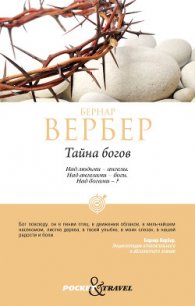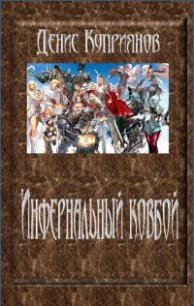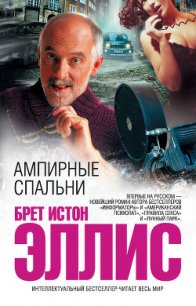Английский язык. Higher education - Филончик Екатерина (читать книги онлайн без сокращений TXT) 📗
Thus, we see that the American system of higher education gives the student much choice which he may realize according to his will. His achievements in his studies and future work depend upon himself. At the same time many Americans are not satisfied with the condition of higher education in their country. The high tuition fees make it difficult for low-paid American families to send their children to university. This is especially true for young people from minority groups — the Blacks, Asians, etc. Though much is spent by the state for education, American universities complain that these funds are becoming smaller with every new year. The equipment which is used at the universities for research is not modern enough, and the universities do not have the money to install new equipment. Under such conditions tuition fees are growing and many talented young people cannot receive higher education. Critics point out that one of every eight highly talented high school graduates does not go on to university or college, and only half the students who enter college for a bachelor's degree actually achieve their aim. All these problems are widely discussed today in American society.
ACTIVITY D
READING COMPREHENSION
PART I
DIRECTIONS:
Fill in the blank with the correct word:
It is not easy to enter a college or a university in the United States, because they may accept only one out of every ten who … .
Applicants are usually chosen on the basis of their high school … .
Among the four types of higher education institutions there is the two-year, or … …, which is financed by the local authorities and which is intended for local needs.
After four years of studies at a four-year college the graduates receive the degree of … … …, or … … … .
More students study at public institutions of higher education because … fees here are much lower.
When a student applies for aid, an analysis is made of the parents' … .
Many universities in the USA do not have the money … new equipment which is necessary for research.
PART II
DIRECTIONS:
Complete the sentence with the best answer (a, b or c) according to the information in the text:
1. Out of more than three million students who graduate from high school each year
a) most of them continue their studies and receive higher education
b) about one million go on for higher education
c) about one half join the workforce
The technical training institution is intended for high school graduates
to learn different technical skills and trades necessary for industry
to develop their knowledge of. foreign languages
to receive the degrees of bachelor of arts, or of science
Of the four-year institutions 28 percent are public and 72 percent are private, but
most of the students study at public institutions
most of the students study at private institutions
the tuition fee is the same for both types of higher school
During one term or semester a student will study
four or five different subjects
both majors and electives
many subjects that he will need in future life
Though much is spent by the state for education
American universities complain that these funds are becoming smaller with every new year
American universities receive much support from rich people
much money is received by the universities from their research programmes
PART III
DIRECTIONS:
III. Find out whether the statement is true or false according to the information in the text:
The SAT is a test in English language and literature which can be taken only once.
Tuition fees are high in community colleges.
The aid to a student may be given in the form of a grant, or stipend which the student must pay back after college.
Those who study at a university or four-year college are known as undergraduates, and those who have received a degree after four years of studies are known as graduates.
A first-year student is called a sophomore, and a second-year student — a freshman.
During one term or semester a student will study six or seven different subjects.
PART IV
DIRECTIONS:
Answer the questions:
What are the four conditions which every applicant must know to enter a college of higher education?
When does a graduate receive the BA or BS?
Why do most students study at public institutions of higher education?
How can a student receive financial aid from a college?
What is the difference between "majors" and "electives"?
Does a student have to earn a certain number of "credits" to receive a degree at the end of four years of college?
On what scale are college grades in the USA?
ACTIVITY E
ORGANIZING YOUR THOUGHTS
PART I
DIRECTIONS:
Working in groups discuss possible answers:
Why are many Americans not satisfied with the condition of higher education in their country?
Name the four categories of higher educational institutions in the USA.
How is the students' progress controlled during the term?
PART II
DIRECTIONS:
Role play the following situation:
Student A: Imagine you’re an American. Ask about the system of higher education in B’s country.
Student B: Answer A’s questions.
ACTIVITY F
WRITE AND SPEAK
PART I
DIRECTIONS:
Give a summary of the text.
PART II
DIRECTIONS:
Ask questions about the texts and let your fellow-students answer them.
PART III
DIRECTIONS:
Express your opinion and fill in the following table:
Britain’s higher education
U.S. higher education
Belarusian higher education
Pros
Cons
ACTIVITY G
LISTENING COMPREHENSION:
DIRECTIONS:
Listen to the conversation between a receptionist and a student enquiring about a course. While listening take notes about the essential characteristics of the course.
season of the year
full time/part time
intensive/extensive
length of the course
hours per week
number of students in class
dates of the course
fee
deposit
accommodation
Enquiring about a Course
Receptionist: Good morning. Can I help you?
Student: Yes please. I would want to have some information about the courses at Swan School.
R: Is that a summer course you're interested in?
S: Yes. Yes, please.
R: Yes. Fine. OK. Well, we have … erm … short intensive full-time courses during the summer.
S: Mm-mm. I would want to know the length of one course.




